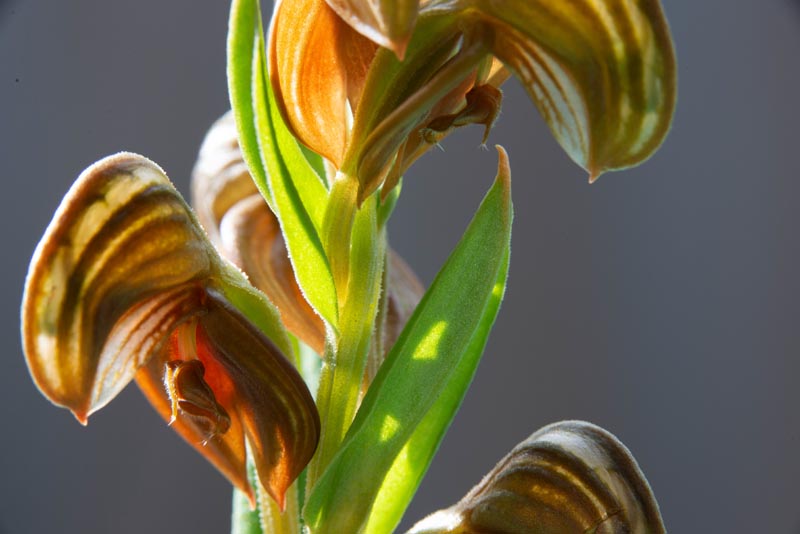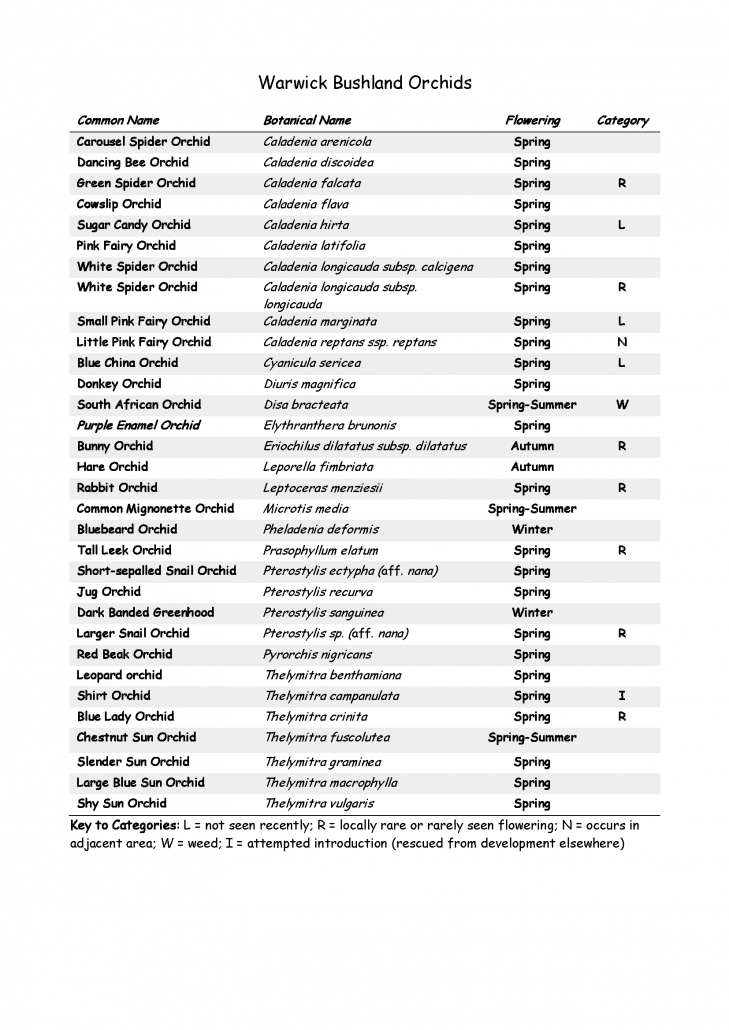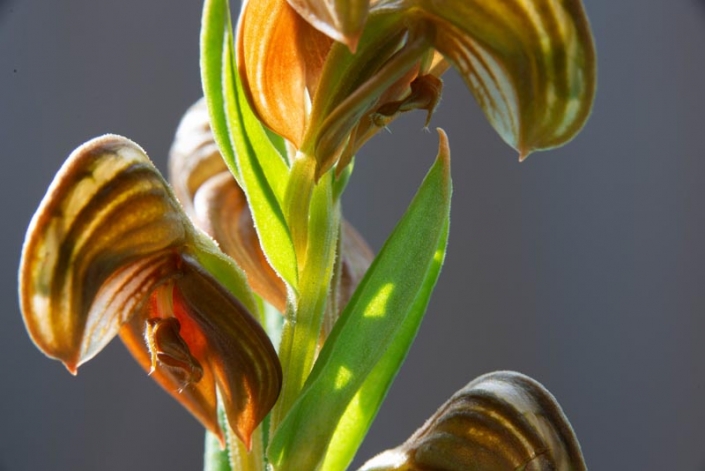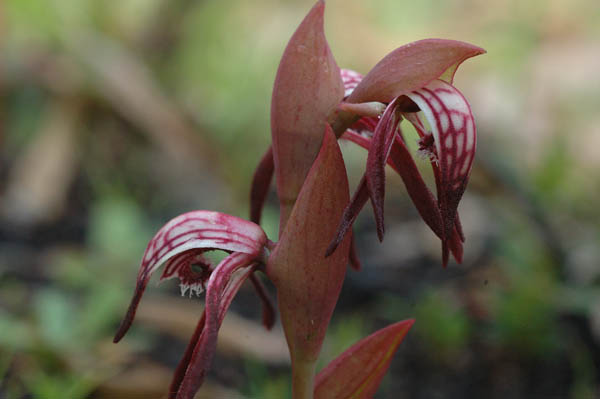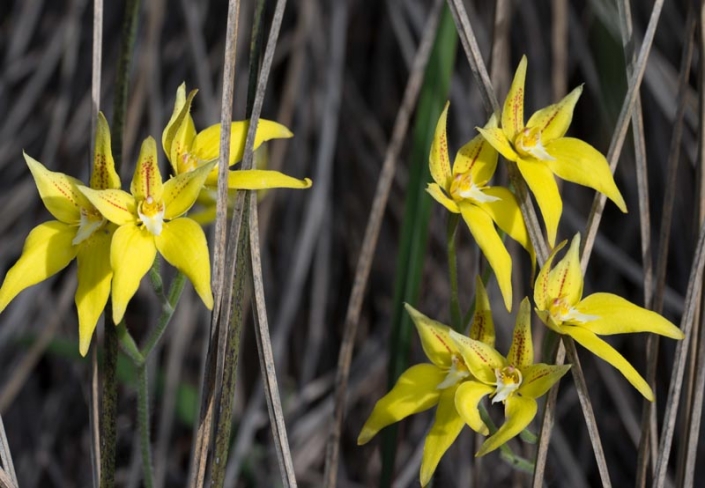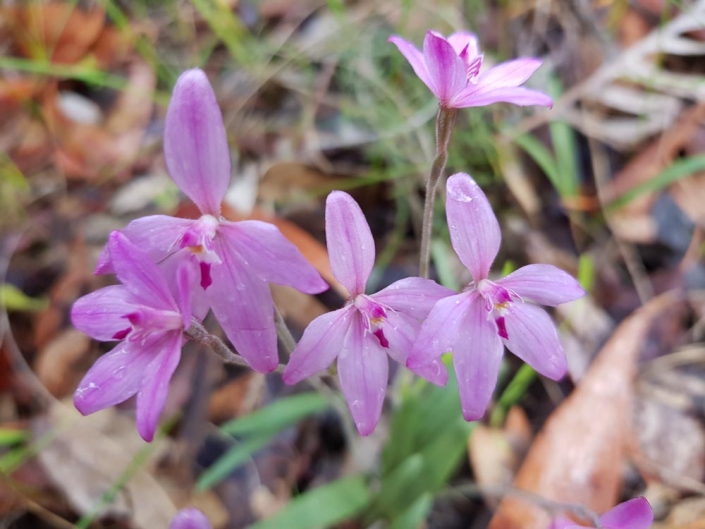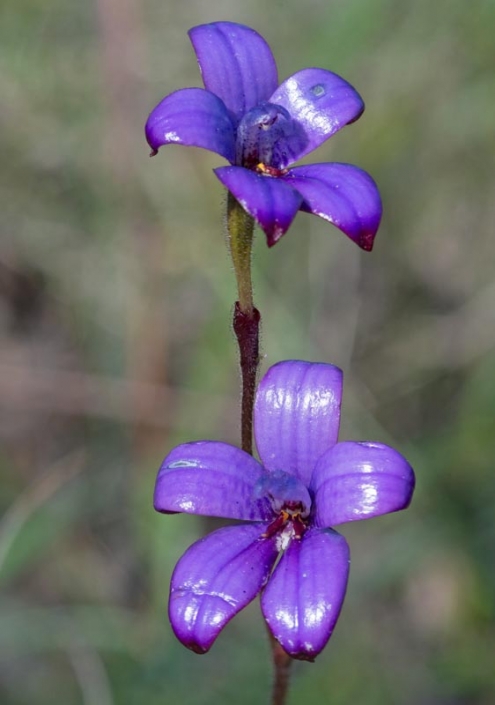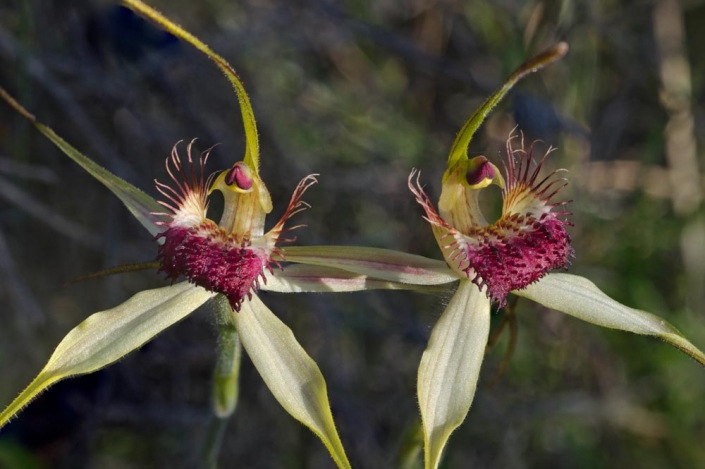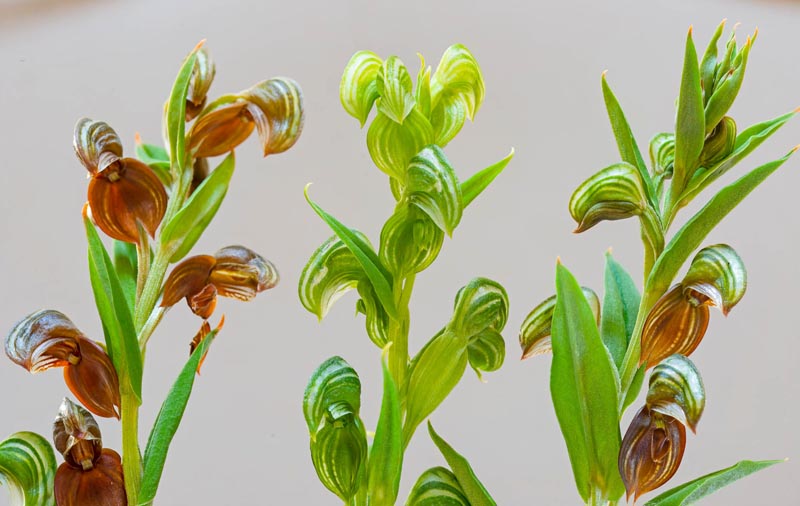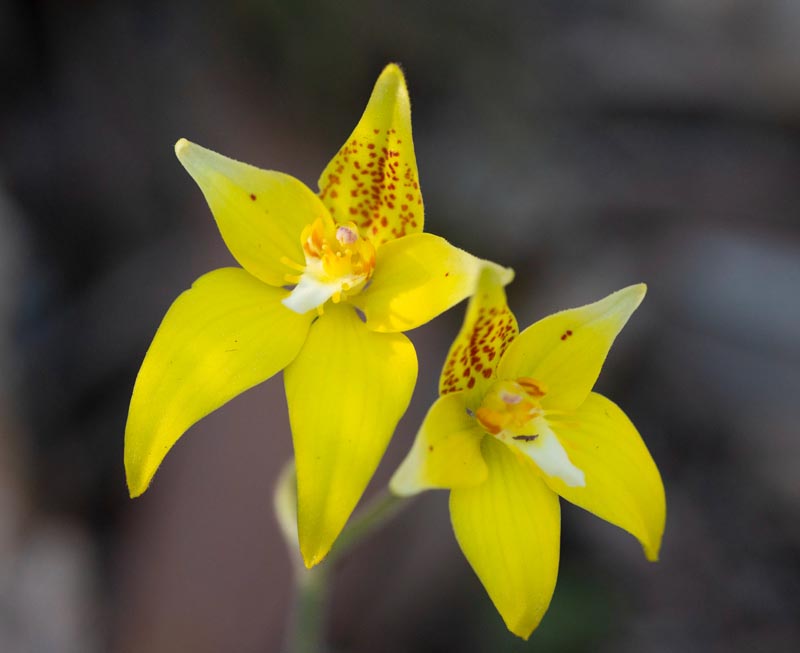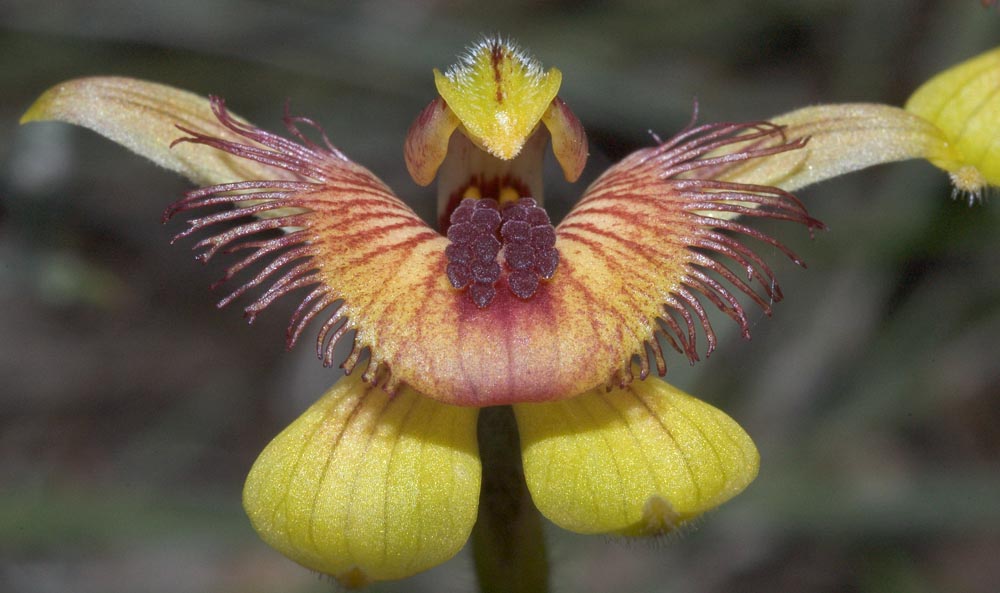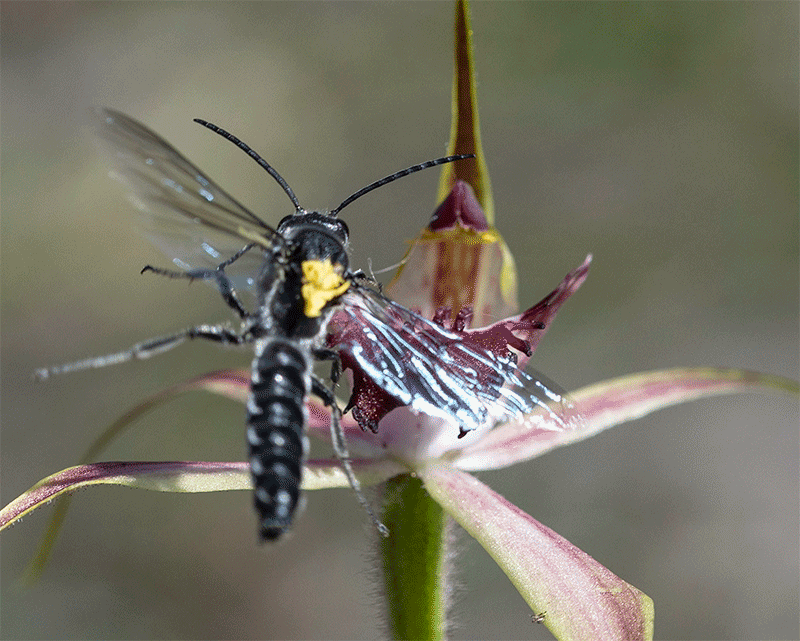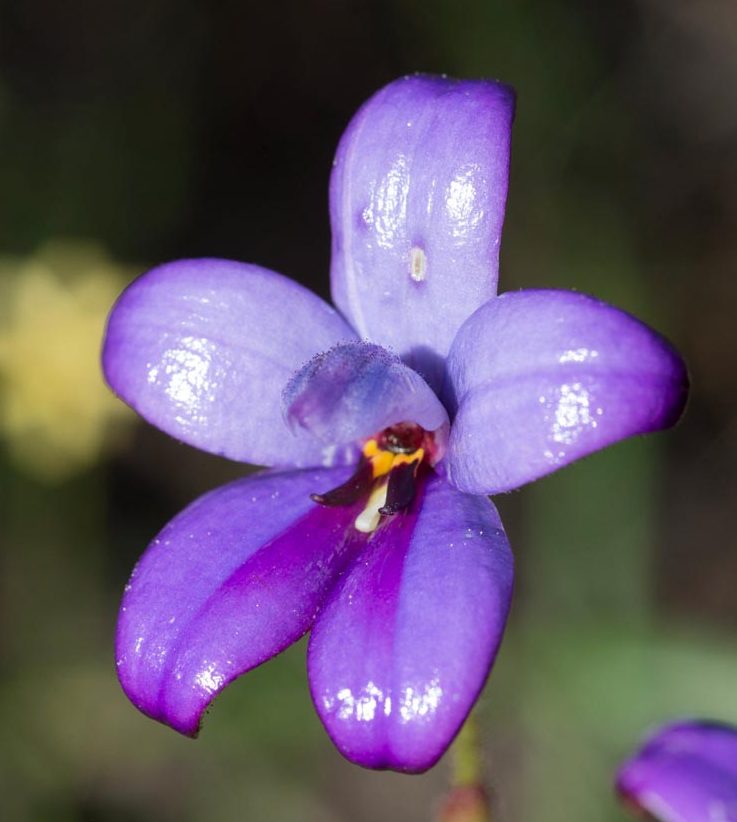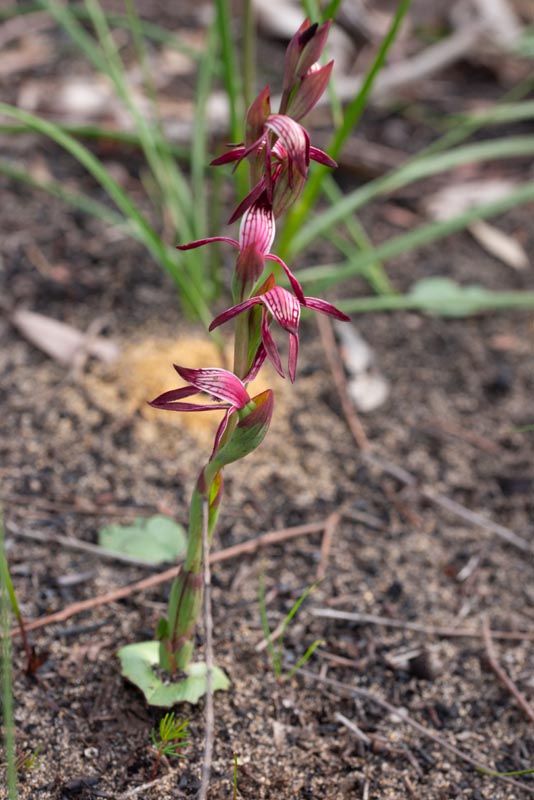Local Orchid Species
Many unique and beautiful flowering species can be found within Warwick Conservation Reserve, and these include over 30 species or subspecies of orchids. Native orchids have underground storage structures (tubers or roots) that allow them to survive the long, hot dry summers underground in a resting state. They grow, flower and set seed when conditions are good in the autumn, winter or spring. They produce new bulbs during winter. They primarily reproduce by producing numerous dust-like seeds, which are dispersed over short or long distances by the wind. Some species also reproduce vegetatively to form colonies with exactly the same flower shape and colour. This can be seen by comparing flower form differences between colonies of Pansy Orchids (Diuris magnifica). There are also several colour forms of local Banded Greenhood orchids, as shown below. Many native orchids have unique associations with symbiotic fungi and pollinating insects, so they are likely to be more sensitive to changes in bushland condition than other plants.
Warwick bushland is an important area for scientific research on orchid ecology, including major studies on orchid pollination (see reference below). With scientific guidance, the Friends of Warwick Bushland help manage orchids within the reserve. They have established propagation trails and record orchid numbers in some areas to help assess the health of the reserve. Work to measure orchid pollination and identify the insects involved is ongoing. This site is also being used to investigate the impacts of climate change and fire on orchids.
Reference
Brundrett MC (2019) A comprehensive study of orchid seed production relative to pollination traits, plant density and climate in an urban reserve in Western Australia. Diversity 11: 123. (link)






